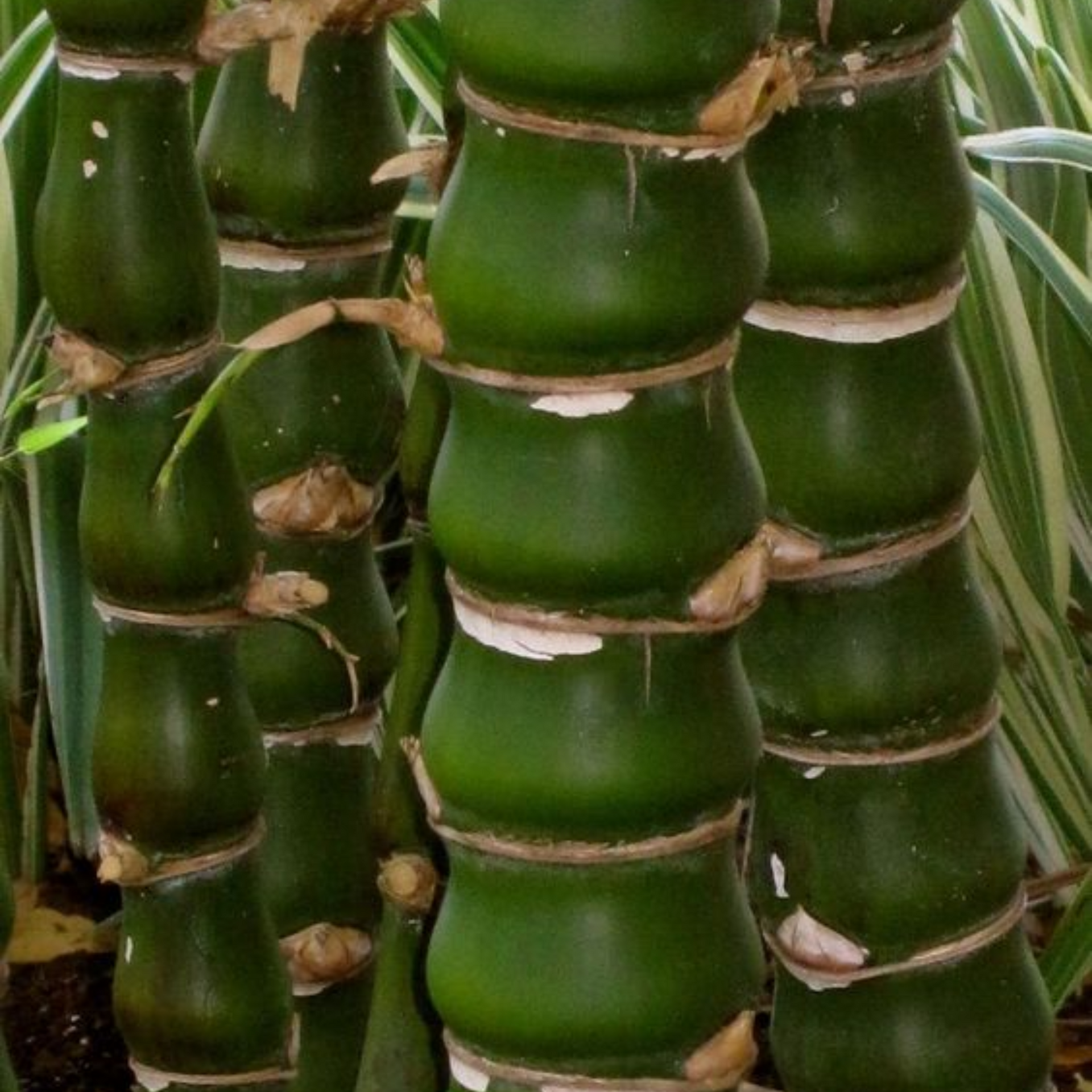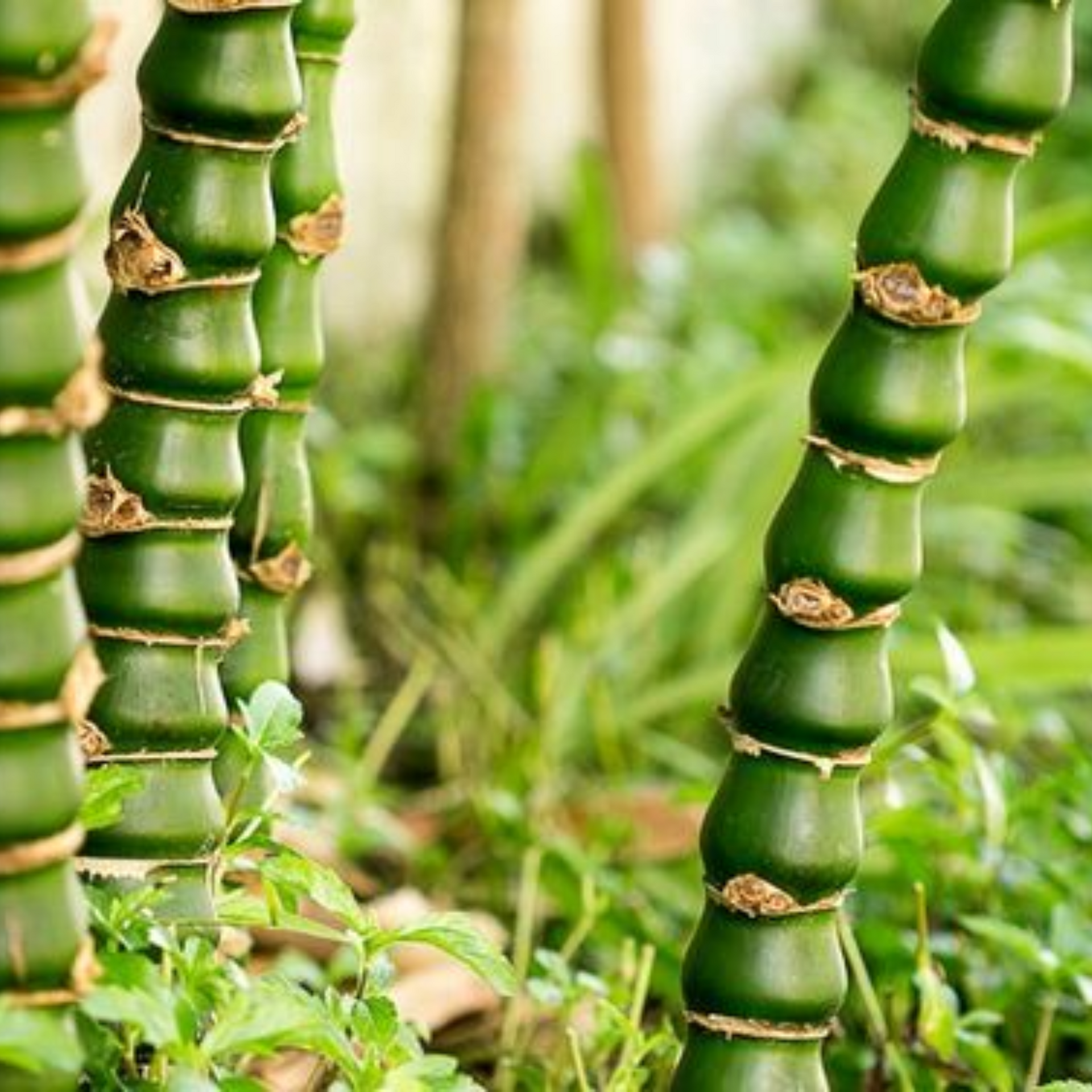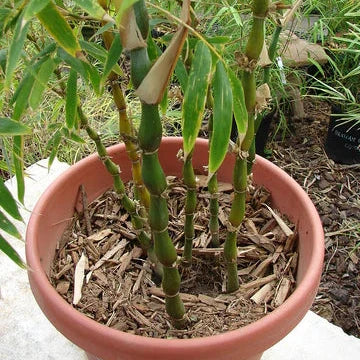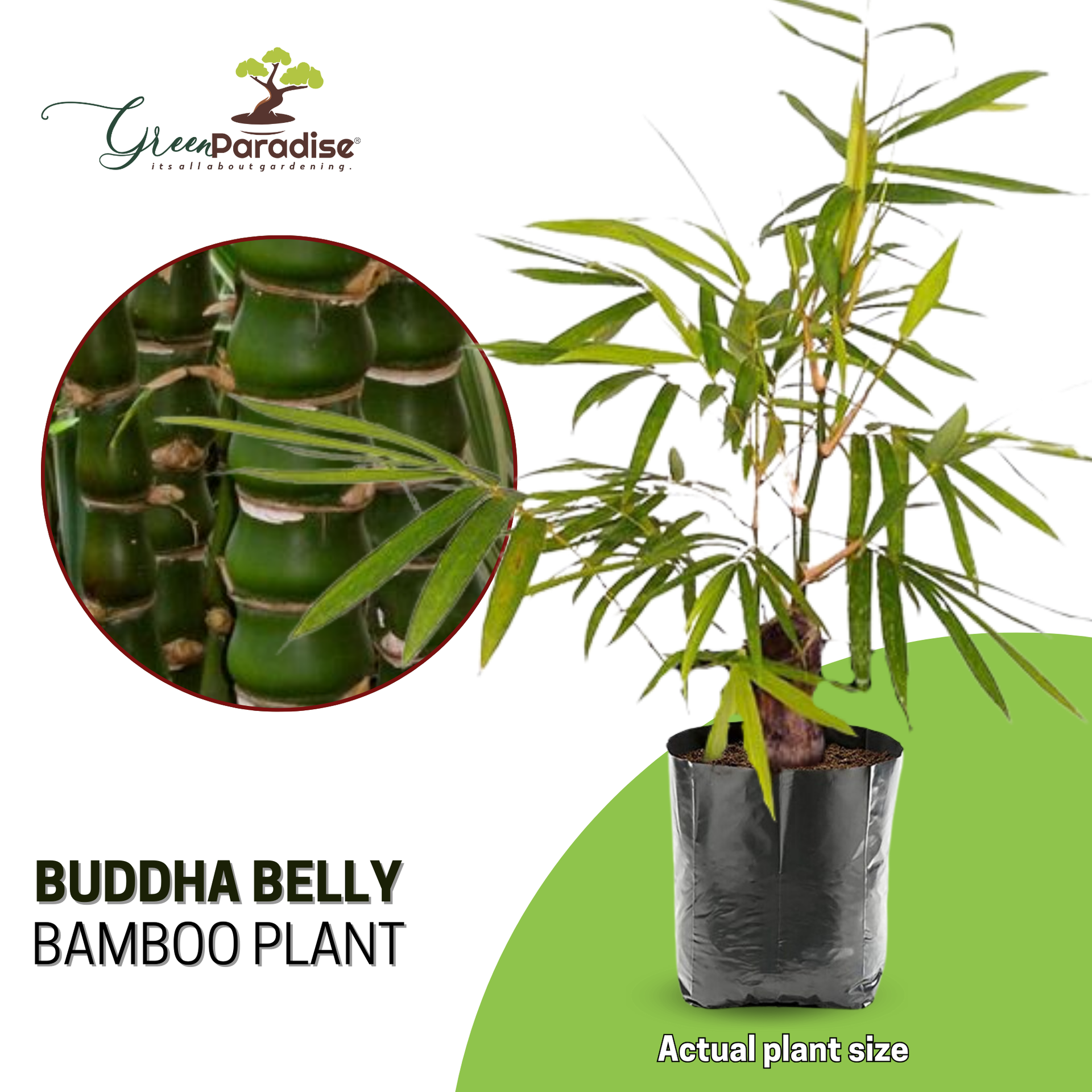



Buddha Belly Bamboo Plant Holy Fengsui Buddha Bamboo Live Plant In A Polybag
Rs. 549.00
Guaranteed Safe Checkout
Green Paradise Offers Buddha Belly Bamboo Plant
Buddha Belly Bamboo, also known as Bambusa ventricosa, is a unique and visually appealing bamboo species that is popular as an ornamental plant. It is native to Vietnam and is named for its distinctive swollen or "belly" culms (stems) that resemble the belly of the Buddha statue.
Here are some key characteristics and features of the Buddha Belly Bamboo:
Appearance:
The most striking feature of this bamboo plant is its swollen internodes or sections of the culms, which give it a distinctive belly-like shape. The internodes can vary in size and shape, creating a visually interesting pattern. The culms are typically light green in color and can reach heights of 20 to 30 feet (6 to 9 meters) in ideal conditions.
Growth habit:
Buddha Belly Bamboo is a clumping bamboo, meaning it forms tight clumps or clusters of culms as it grows. The clumps expand slowly over time but generally remain relatively compact compared to other bamboo species. This makes it suitable for smaller gardens or containers.
Foliage:
The leaves of Buddha Belly Bamboo are lance-shaped and bright green in color. They create a dense canopy, providing a tropical and lush appearance to the plant.
Cultural significance:
The plant is highly revered in Asian cultures, particularly in Buddhism, where it symbolizes good luck, prosperity, and enlightenment. It is often grown near temples or used in landscaping to create a serene and calming atmosphere.
Hardiness:
Buddha Belly Bamboo is best suited for tropical and subtropical climates. It thrives in warm and humid conditions and is not tolerant of frost or freezing temperatures. However, it can be grown in containers and brought indoors during colder months in cooler regions.
Care and maintenance:
This bamboo species requires regular watering to keep the soil moist but not waterlogged. It prefers well-draining soil and benefits from occasional fertilization with a balanced plant food. Pruning is generally not necessary, but you can remove any dead or damaged culms as needed.
Propagation:
Buddha's Belly Bamboo can be propagated through division or by taking rhizome cuttings. When dividing the clump, it's important to ensure that each division has enough rhizome and roots for successful establishment.
When growing Buddha Belly Bamboo, it's essential to consider its potential to spread and become invasive if not properly contained. The use of a physical barrier, such as a rhizome barrier, can help control its spread and prevent it from encroaching on other areas of the garden.
Overall, Buddha Belly Bamboo is a captivating and distinctive bamboo species that adds a touch of elegance and uniqueness to any landscape or indoor space. Its distinct shape and cultural significance make it a sought-after plant for bamboo enthusiasts and those looking to create a tranquil and harmonious environment.
How To Grow Buddha Belly Bamboo Plant
Growing a Buddha Belly Bamboo plant (Bambusa ventricosa) can be a rewarding experience. This unique bamboo species is known for its distinctive swollen internodes, resembling a "belly" or "potbelly."




